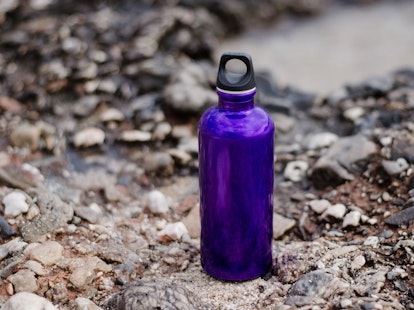Australia has issued two instruments for certain toys. Projectile toys must comply with the new instrument from June 12, 2021 and aquatic toys must comply with the new requirements from June 12, 2022.
In Australia, children’s toys are regulated by several mandatory safety standards. These mandatory safety standards, which address physical and mechanical properties, chemical properties and/or labeling requirements, include:
- Consumer Protection Notice No. 14 of 2003, as amended by Consumer Protection No. 1 of 2005 ‘Toys for children up to and including 36 months of age’
- Consumer Protection Notice No. 1 of 2009 ‘Lead and certain elements’ (this standard includes finger paints)
- Consumer Protection Notice No. 2 of 2009 ‘Flotation and aquatic toys’
- Consumer Protection Notice No. 5 of 2010 ‘Toys containing magnets’
- Consumer Protection Notice No. 16 of 2010 ‘Projectile toys’
These mandatory safety standards reference certain toy safety standards for compliance with their requirements.
On June 11, 2020, Australia registered two instruments to update two mandatory safety standards for specific toys. In effect since June 12, 2020, these new instruments are
- Consumer Goods (Projectile Toys) Safety Standard 2020 dated June 3, 2020
- Consumer Goods (Aquatic Toys) Safety Standard 2020 dated June 3, 2020.
Projectile Toys
Consumer Goods (Projectile Toys) Safety Standard 2020 mandates projectile toy compliance with specific clauses in one of four current toy standards:
- AS/NZS ISO 8124.1:2019 ‘Safety aspects related to mechanical and physical properties’
- ASTM F963-17 ‘Standard Consumer Safety Specification for Toy Safety’
- EN 71-1:2014+A1:2018 ‘Safety of toys - Part 1: Mechanical and physical properties’
- ISO 8124-1:2018 ‘Safety of toys - Part 1: Safety aspects related to mechanical and physical properties’
Additionally, a warning statement (WARNING: Do not aim at eyes or face) is required on the instructions accompanying the toy, and on the packaging for projectile toys capable of launching a projectile more than 300 mm.
Until June 11, 2021, projectile toys must comply with either the Consumer Product Safety Standard for Children’s Projectile Toys (Consumer Notice No. 16 of 2010) or the new instrument. From June 12, 2021, these toys must comply with the new instrument.
Aquatic Toys
Consumer Goods (Aquatic Toys) Safety Standard 2020 mandates aquatic toys to comply with warning formatting requirements, and specific clauses in one of two existing toy standards:
- AS/NZS ISO 8124.1:2019 ‘Safety aspects related to mechanical and physical properties’
- ISO 8124-1:2018 ‘Safety of toys - Part 1: Safety aspects related to mechanical and physical properties’
Until June 11, 2022, aquatic toys can comply with either the Consumer Product Safety Standard for Flotation Toys and Aquatic Toys (Consumer Protection Notice No. 2 of 2009) or the new instrument. From June 12, 2022, these toys must comply with the new instrument.
Highlights of these two new instruments are summarized in Table 1.
| Scope | New Instrument | Existing Instrument | Compliance Date |
|---|---|---|---|
| Projectile Toys | Consumer Goods (Projectile Toys) Safety Standard 2020 | Consumer Product Safety Standard for Children’s Projectile Toys (Consumer Notice No. 16 of 2010) on June 12, 2021 | Until June 11, 2021: New or existing instrument From June 12, 2021: New instrument |
| Aquatic Toys | Consumer Goods (Aquatic Toys) Safety Standard 2020 | Consumer Product Safety Standard for Flotation Toys and Aquatic Toys (Consumer Protection Notice No. 2 of 2009) on June 12, 2022 | Until June 11, 2022: New or existing instrument From June 12, 2022: New instrument |
Table 1
SGS is committed to providing information about development in regulations for consumer products as complimentary services. Through a global network of laboratories, SGS provides a wide range of services including physical/mechanical testing, analytical testing and consultancy work for technical and non-technical parameters applicable to a comprehensive range of consumer products. Please do not hesitate to contact us for further information.
For enquiries, please contact:
Hingwo Tsang
Global Information and Innovation Manager
t: (+852) 2774 7420
© SGS Group Management SA - 2020 - All rights reserved - SGS is a registered trademark of SGS Group Management SA. This is a publication of SGS, except for 3rd parties’ contents submitted or licensed for use by SGS. SGS neither endorses nor disapproves said 3rd parties contents. This publication is intended to provide technical information and shall not be considered an exhaustive treatment of any subject treated. It is strictly educational and does not replace any legal requirements or applicable regulations. It is not intended to constitute consulting or professional advice. The information contained herein is provided “as is” and SGS does not warrant that it will be error-free or will meet any particular criteria of performance or quality. Do not quote or refer any information herein without SGS’ prior written consent.



